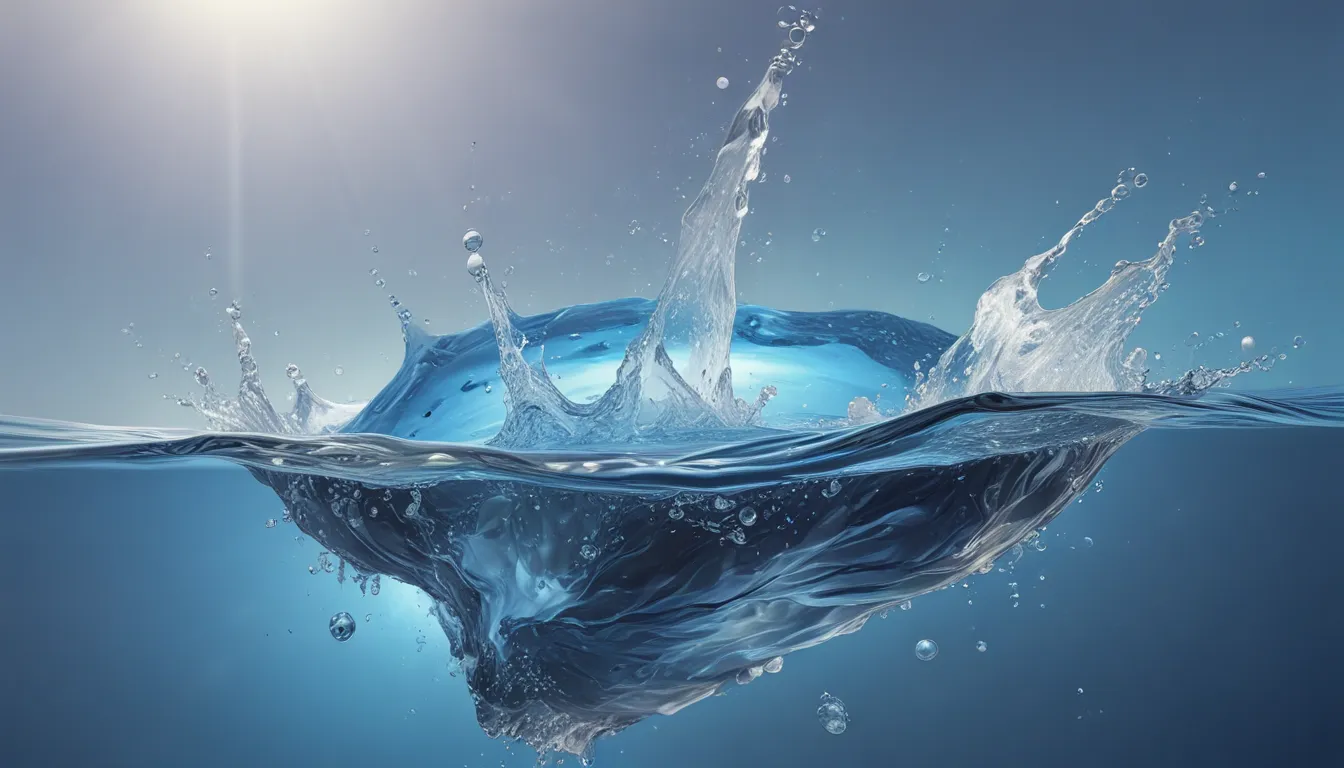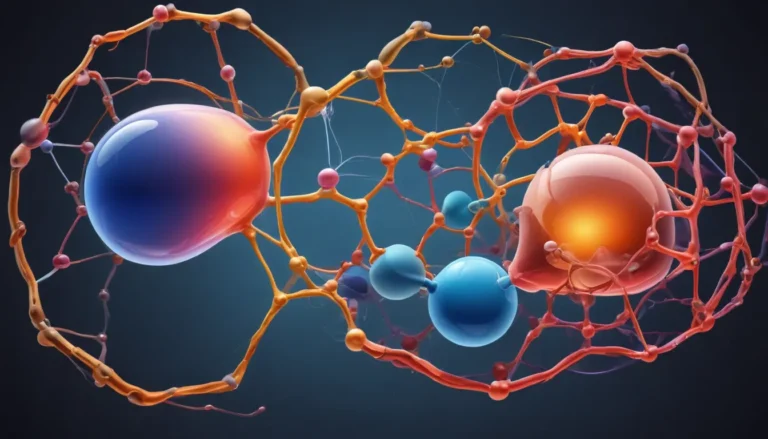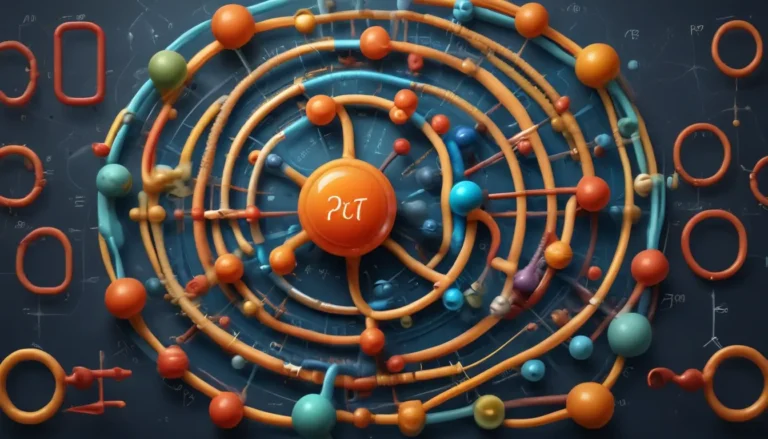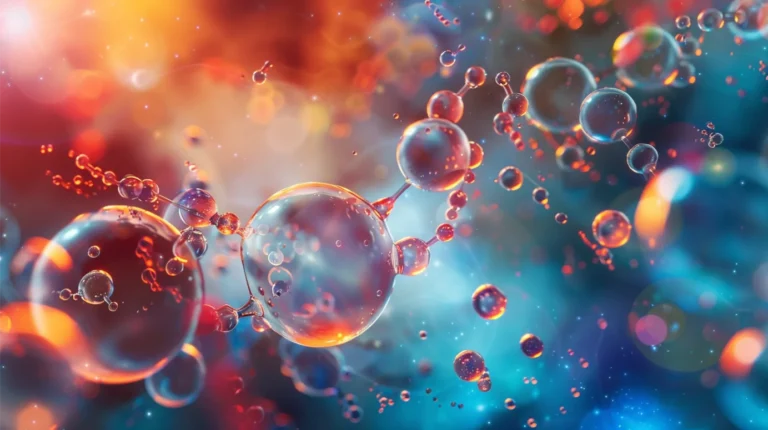A Note About Images: The images used in our articles are for illustration purposes only and may not exactly match the content. They are meant to engage readers, but the text should be relied upon for accurate information.
Welcome to the captivating world of chemistry, where the Ion Product of Water (Kw) reigns supreme as a fundamental concept that unlocks the mysteries of aqueous solutions. In this article, we will unravel 12 astonishing facts about Kw, shedding light on its significance in acid-base chemistry, its role in determining pH, and its universal applicability in understanding the behavior of water in various chemical processes.
Understanding the Ion Product of Water (Kw)
The Ion Product of Water (Kw) is a cornerstone concept in chemistry, representing the equilibrium constant for the autoionization of water. This phenomenon occurs when water molecules spontaneously dissociate into hydronium (H3O+) and hydroxide (OH-) ions, shaping the behavior of aqueous solutions.
The Constant Nature of Kw
One remarkable fact about Kw is its consistency at a given temperature. Regardless of the concentration of hydronium and hydroxide ions in a solution, the product always equals Kw. At 25 degrees Celsius, Kw stands at 1.0 x 10^-14 mol^2/L^2, providing a stable reference point for understanding water’s behavior.
Temperature’s Influence on Kw
Temperature holds the power to alter Kw, with an increase in temperature leading to a rise in Kw. This change signifies an increase in the concentrations of hydronium and hydroxide ions in water, governed by the Arrhenius equation. Understanding this relationship is crucial for predicting the behavior of water in different conditions.
The Kw Value in Different Solutions
- Neutral Solutions: A neutral solution like pure water showcases a balanced concentration of hydronium and hydroxide ions, resulting in a Kw of 1.0 x 10^-14.
- Acidic Solutions: In acidic solutions, the dominance of hydronium ions over hydroxide ions leads to a Kw value less than 1.0 x 10^-14, contributing to the solution’s acidity.
- Basic Solutions: Conversely, basic solutions with a higher concentration of hydroxide ions exhibit a Kw value greater than 1.0 x 10^-14, showcasing alkaline properties.
Calculating pH and pOH using Kw
Kw serves as a key player in determining the pH and pOH of solutions, essential for measuring their acidity and alkalinity. By leveraging Kw and the concentrations of hydronium or hydroxide ions, chemists can calculate the pH and pOH using logarithmic equations, enriching their understanding of solution chemistry.
Impact of Dissolved Solutes on Kw
Dissolved solutes in water can influence the concentrations of hydronium and hydroxide ions, subsequently altering the Kw value. This phenomenon plays a vital role in comprehending the behavior of acids, bases, and salts in solution, offering insights into various chemical reactions.
Additional Insights into Kw
- Inverse Proportionality to Temperature: Kw exhibits an inverse relationship with temperature, decreasing as temperature rises and vice versa. This observation aligns with Le Chatelier’s principle, highlighting the dynamic nature of water’s autoionization process.
- Calculation of Acid Dissociation Constants: Kw enables the determination of acid dissociation constants (Ka) for weak acids, vital in analyzing their strength and behavior in solutions.
- Universality of Kw: As a universal constant, Kw applies to all aqueous solutions, transcending specific solutes to predict and understand water’s behavior in diverse chemical processes.
Kw’s Role in Acid-Base Chemistry
Embedded in the fabric of acid-base chemistry, Kw serves as a cornerstone concept that unravels the intricacies of acidity, alkalinity, and pH. Delving into Kw deepens our knowledge of chemical reactions, equilibrium dynamics, and the fundamental principles governing solution behavior.
Journeying Through the Realm of Chemistry
As we embark on this journey exploring Kw’s enchanting world, we uncover its pivotal role in chemical reactions and equilibrium systems. The 12 astonishing facts about the Ion Product of Water illuminate its significance in shaping the acidity or alkalinity of solutions, offering a holistic view of water’s self-ionization and its broader implications in chemistry.
FAQs
-
What is the Ion Product of Water (Kw)?
The Ion Product of Water, denoted as Kw, represents the product of hydrogen ion concentration and hydroxide ion concentration in aqueous solutions. -
How does temperature impact the Kw value?
An increase in temperature leads to a higher Kw value, signifying elevated concentrations of hydronium and hydroxide ions in water. -
Why is Kw essential in acid-base reactions?
Kw serves as a reference point for determining solution pH and understanding the relative strengths of acids and bases, enabling the calculation of hydrogen ion and hydroxide ion concentrations. -
How do common ions affect Kw?
The presence of common ions can decrease Kw by shifting the equilibrium towards undissociated water molecules, known as the common ion effect. -
Can Kw be altered in a chemical reaction?
While Kw remains constant under standard conditions, changes in temperature or the addition of substances affecting ion concentrations can alter its value.
Embracing the Beauty of Chemistry
Our journey through the captivating realms of chemistry doesn’t end with Kw! Venture into the realm of chemical equilibrium, where reactions find harmony. Explore the enigmatic world of physical chemistry, bridging the realms of chemistry and physics. And for avid learners of acid-base chemistry, delve into Kw and pKw to uncover essential concepts shaping our understanding of solutions. Keep nurturing your curiosity and let chemistry’s wonders inspire your quest for knowledge!






